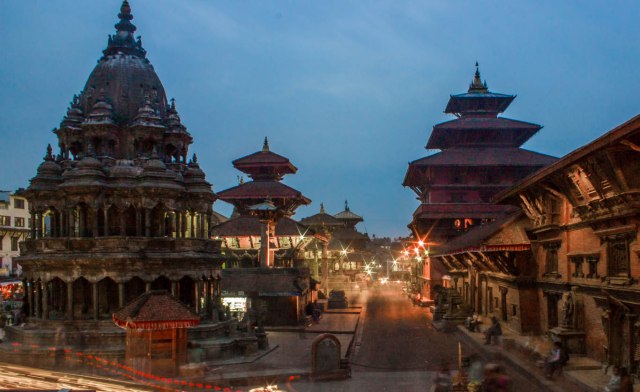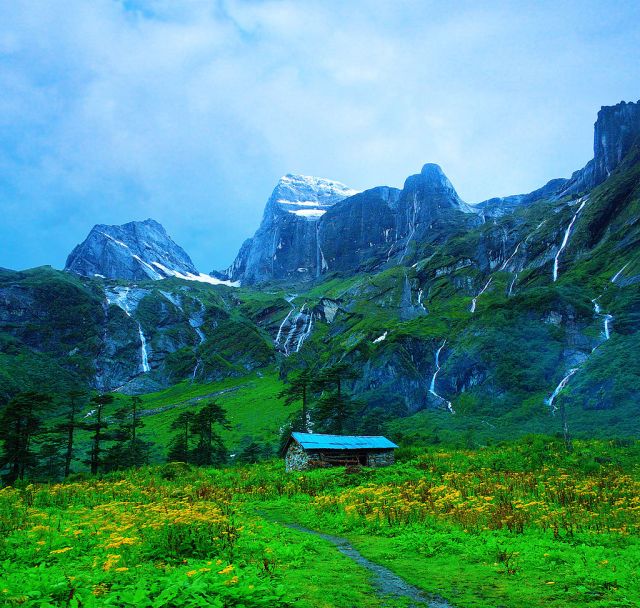If you are planning a trip to Nepal, there are a very few things that you must know. Please keep in mind that you are going to a developing country where facilities and quality of life may be poorer when compared to that in the developed countries. However, Nepal is a famous tourist destination and a range of facilities is available depending upon whether you are a budget traveler or a business traveler. Know that Nepal is one of the safest travel destination. If you heard it is not safe, it was so many years ago during the civil war, even then, it was unsafe only in some rural areas.
What to Know?
Roads are poorly maintained and traffic laws are weakly enforced. Roads are often without footpath so be careful while walking on the roads. Begging is common but ignore the beggars as giving encourages begging. Always greet your passerby with a smile saying ‘Namaste’. Turbulent rainfalls with thunderstorms and winds are common in Nepal, specially in summer, the monsoon season. Weather may change abruptly and may cause delays/cancellations in local flights. Expect unscheduled strikes leading to a complete road/market closure for hours/day, so make your travel plan more flexible. Momo and chowmin are the most common food along with the regular Nepali Thali (rice, lentil soup, seasonal vegetable curry, cooked green leaves, optional chicken/mutton curry, and pickles). Please be extra careful while buying street foods for their quality; you must try Pani Puri or Chat if you like spicy food though. Always drink cheaply available bottled mineral water as the public tap water is not potable unlike in the western world. Always check the date of expiry for whatever you buy. Bargaining is very common in shopping so always be generous in bargaining. Almost all transactions are carried in cash so always keep sufficient cash/change with you. ATMs and Banks are commonly found in the cities like Kathmandu and Pokhara but they might be difficult to find if you are going for trekking in the mountainous region.
Where to go?

From Kathmandu: As there is only one international airport (Tribhuvan International Airport) in Nepal, your entry point is always Kathmandu, the city of temples (note that over 90% people in Nepal are Hindu). As in other developing cities around the world, you will experience the hustle and bustle of city life there. If you are not interested in the history or temples, go directly to the outskirts of the city such as Nagarkot, from where you can see the beautiful Himalayan range at sunrise. If you are a pro rafter, consider going to Bhotekoshi River, a four hour drive from Kathmandu. Since it is in the same direction, consider also to include a bunjee jumping adventure at The Last Resort hotel in your itinerary.
If you are going Nepal just to experience Mount Everest, consider trekking to the Mt. Everest Base Camp. In this case, you will have to first take a flight from Kathmandu to Lukla (30 minutes), the gateway to the Mount Everest Base Camp. The whole return trip to the base camp is about 20 days.

Pictures: Bests of Pokhara.
From Pokhara: If you want a closer look of the Himalayas, go straight to Pokhara valley, also known as honeymoon city, one of the most beautiful cities of Nepal. Take either a half an hour flight or a 6-8 hours bus ride from Kathmandu. If you go by bus, you will have the opportunity to enjoy the scenic hilly landscape and do rafting in Trishuli River on the way. You will be welcomed by a myriad cultures and smiling people in Pokhara. Enjoy the varieties of local and international food while looking at the reflection of the Annapurna Himalayan Range on the Phewa Lake. Pokhara is also the gateway to the world famous trekking route Annapurna Circuit. The longer you trek to the North, the closer you get to the Himalayas; cross them if you dare and look from behind. Please don’t go without a trekking guide if you are going to trek the whole Annapurna Circuit (15-20 days); they are cheaply available. If you are an amateur climber, go for a short trekking (3-4 days) given below, which you can do even without a trekking guide.
If you are traveling Nepal for a short period of time, below is a action-packed 10-day itinerary:
Day 1: Arrival at Kathmandu
Day 2: Rafting at Trishuli River and arrival to Pokhara
Day 3: Pokhara sightseeing (Boating, para-jumping, Davi’s Fall, World Peace Monastery, Gupteshwor and Mahendra Cave, etc.)
Day 4-8: Trekking to a part of Annapurna circuit (route: Nayapool – Birethati – Tikhedhunga – Ghorepani – Poonhill – Tadapani – Ghandruk – Nayapool (Staying in decent guesthouses in-between)
Day 9: Fly from Pokhara to Kathmandu and do sight seeing in the evening
Day 10: Bunjee jumping at the Last Resort
Day 11: Depart from Kathmandu
What to Carry?
1. Raincoat/umbrella (must have if you are traveling in summer)
2. High quality frictionless undergarments (people often get allergy because of friction while walking, also carry antiperspirant/anti fungal powder)
3. Torch light (expect daily load shedding for a few hours in the evening, specially in winter)
4. Warm clothes (specially if you are going for trekking)
5. Water sports shoes/a pair of slippers, a pair of comfortable hiking shoes, plenty of very good cotton socks, and probably leech socks?
6. Hat/sunscreen lotion, sunglasses, cold cream
7. Mosquito repellent spray (not really needed)
8. A mask and a lip balm (is a must)
9. A medium trekking bag with double straps (must be very comfortable)
10. Tooth brush/paste
11. Nausea pills (riding in road bends may cause nausea/vomiting)
12. Muscle/joint pain relief spray
13. A small towel/wet wipes
14. A small sleeping bag (backup)
15. Water bottle (not really needed since mineral water bottles are commonly available)
When to go?
Nepal can be traveled in all seasons. Personally, I like rainy season because I enjoy being connected to the nature. One more reason is that, during the rainy season, everything is green, from the paddy fields, to the forests. You will love it when the majestic mountains play hide and seek with the clouds; just imagine the face of a beautiful young lady hidden in a scarf. Your inner passion will be rejuvenated when you connect to the nature – guaranteed. However, if you are trekking, it is more comfortable to travel in trekking seasons, which are March-June, and September-November.
There is much more Nepal has to offer for you. Please check this list of top 18 most beautiful places of Nepal if you are there for the real adventure.

Barun Valley in the Monsoon.
And don’t forget to check out:
1. The official travel website of the government of Nepal for more detailed advice.
2. This summary video about Nepal.
Welcome to Nepal. I wish you all the best in your adventure.
Namaste!



Love the ‘frictionless undergarments’ tip. Never heard of them. Are they easily found in Thamel? One other thing, Many of these items can be found in Thamel or even rented from a store there. I try to get people to buy such things here to support the Nepali economy, as well as to save the tourist money. What should they bring from home out of your list?
LikeLike
Hi Amanda, thanks for pointing it out. There are no such items tagged as ‘frictionless’, but undergarments with high quality cotton material should be fine, a little bit loose would be better though. Boxer-type should be better (for men?) because they don’t directly touch the groin.
All of the above-mentioned items can be purchased anywhere in the cities such as Kathmandu (Thamel), or in Pokhara. I was just listing the items to be carried during the travel.
LikeLike
Plastic water bottles and their disposal, especially when trekking is a big problem. So water purification tablets or a filter are essential if only when outside the cities.
LikeLike
Thanks for raising this important environmental concern Marianne. Everyone should try to minimize waste production. The idea of water purification tablets is great because water is commonly found in the springs, streams and lakes on the way if not in taps.
LikeLike
Water, unless treated, is NEVER safe to drink in Nepal, even if you see local people drinking it and regardless of their assurances that it is pure and clean spring water. There are several ways to treat water: iodine or other water purification tablets, a water filter, steripen/ionization, and boiling ((don’t use untreated water to brush teeth).
Long term, boiled filtered water is best of all, but tends to be easier to do in Kathmandu than out in the village. You can never be too careful about water. After ten years living in Nepal, I’m still very careful and touch wood, have only once had any problem with water-borne stomach problems (after drinking from the spring everyone said was pure).
LikeLiked by 1 person
Well done Sagar!
I have now shared this useful piece of writing through my Google+ page.
I strongly recommend people to tour both Thamel (to shop souvenir or enjoy nightclub), Bhaktapur (to be at Durbar Square (Durbar means old Palace) surrounded by various picturesque temples) and Nagarkot (to enjoy various countryside sightseeing including Sunrise, bird’s-eye-view of Kathmandu Valley and Himalayas from the nearest possible hillside station around Kathmandu). Those colleagues who are after an economic yet reliable/safe stay in Kathmandu/Thamel or Nagarkot, as well as shorter trekking in the region can freely contact me at shankeronly@gmail.com or +61 (0)449 669 679. I have my close relatives running hotels and tour packages both in Thamel and Nagarkot for more than a decade now and my recommendations will be specially treated from all aspects in those hotels. I might also ask some of my siblings, friends or students to volunteer and provide you with necessary company during your trip there, in their free times. I have been doing this mainly to help you have a good impression of my hometowns and country, despite so many other problems in this developing part of the world mainly attributed to politics, bureaucracy and poverty. People are generally very nice to tourists, young people can understand and speak English well; temples and festivals (take them more from architecture point of view than religious which mostly young generation of Nepalese do as well), natural landscape and adventure are all truly exceptional! Just be sure you remain healthy – Be careful with foods in particular, as Sagar has also suggested.
Hope you enjoy Nepal and her natural and cultural beauty!
Shanker Dhakal (I was born in Nagarkot, studied and lived in Bhaktapur, worked in Kathmandu/Thamel, and always loved travelling Pokhara; before living Japan and now in Melbourne)
LikeLiked by 1 person
loved it
LikeLiked by 1 person
Hi,
Can you plz let me know who has taken the picture of Mt. Fishtail behind lash green grass field in the banner? If its any of you can u plz share your FB profile bcoz this picture is bein used in other blog and a person claiming tht he has taken this snap in 1984.
Can u plz help?
Thanks
Laha
LikeLike
It was not taken by me. I will ba happy to know about the original photographer.
LikeLike